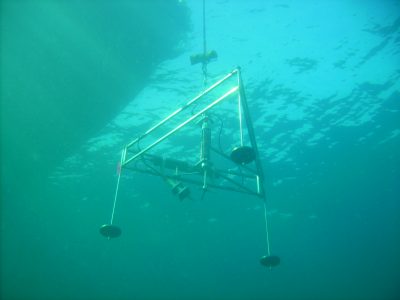Our work is centered around underwater fluxes of oxygen, carbon, and greenhouse gases in aquatic ecosystems. One of our main tools is the aquatic eddy covariance technique. Our work can be grouped in three:
1. In situ studies of blue carbon flows, oxygen dynamics, whole-system metabolism, and exchange of greenhouse gases in submerged ecosystems. We often focus on systems where conventional flux methods are difficult or impossible to use, and therefore are understudied.
2. Teaching and training of students and new users.
3. Development of new sensors and flux calculation protocols to advance the aquatic eddy covariance technique.
The aquatic eddy covariance technique was adapted from the atmospheric boundary layer to measure fluxes of oxygen between benthic surfaces and the overlying water in a joint effort between our lab and the Max Planck Institute for Marine Microbiology, Germany. We published our first proof-of-concept paper in 2003 (Berg at al. 2003). Since then, the approach has become widely accepted and is being used by an increasing number of researchers, mostly in marine environments. The eddy covariance technique has been used for many decades in the atmospheric boundary layer where it is by far the most common flux method today. We hope to see a similar development for the aquatic environment. The technique has clear advantages over traditional underwater flux methods, including:
1. Measurements are made with no or minimal disturbances of the natural environment (e.g. light, flow, exchange of substances)
2. Fluxes are integrated over a large area on the studied surface (many square-meters) and have a high temporal resolution (minutes)
3. The technique can be applied in environments where traditional enclosure methods are difficult or impossible to use (e.g. highly permeable sediments, seagrass meadows, and coral and oyster reefs)
Recently, we have also applied the technique ‘upside down’ right below the air-water interface to measure exchange of oxygen and greenhouse gases (Berg and Pace 2017; Berg et al 2017; Berg et al 2020). For more information on our work and findings, please take a look at our papers.

Recovery of eddy system after 48 h of deployment in the Florida Keys.

Lowering eddy system down over Quagga mussels in the Great Lakes, WI.

Eddy system at low tide deployed over dense intertidal oyster reef on the Eastern Shore, VA

Measurements of air-water gas exchange in Hardware River, VA